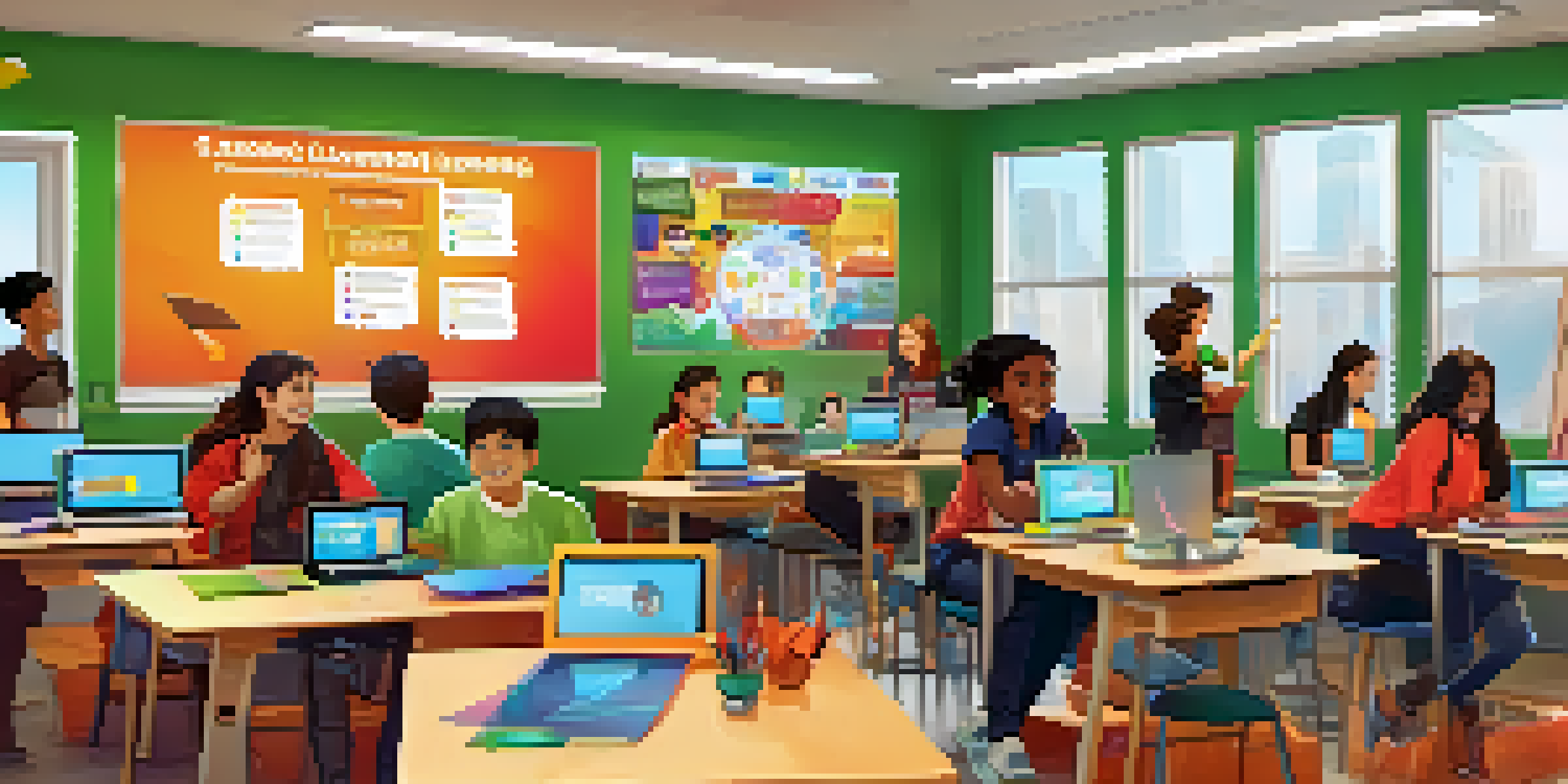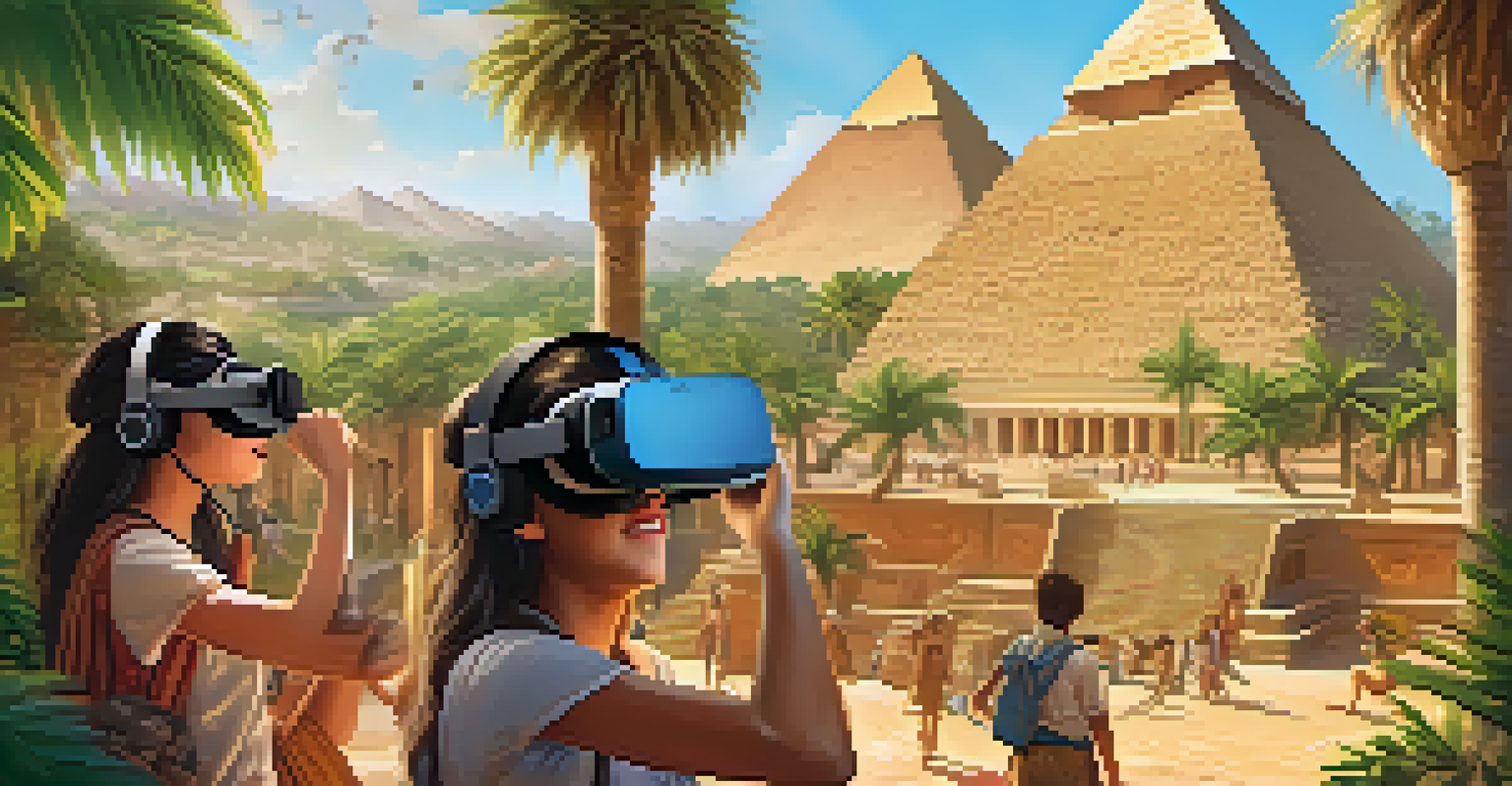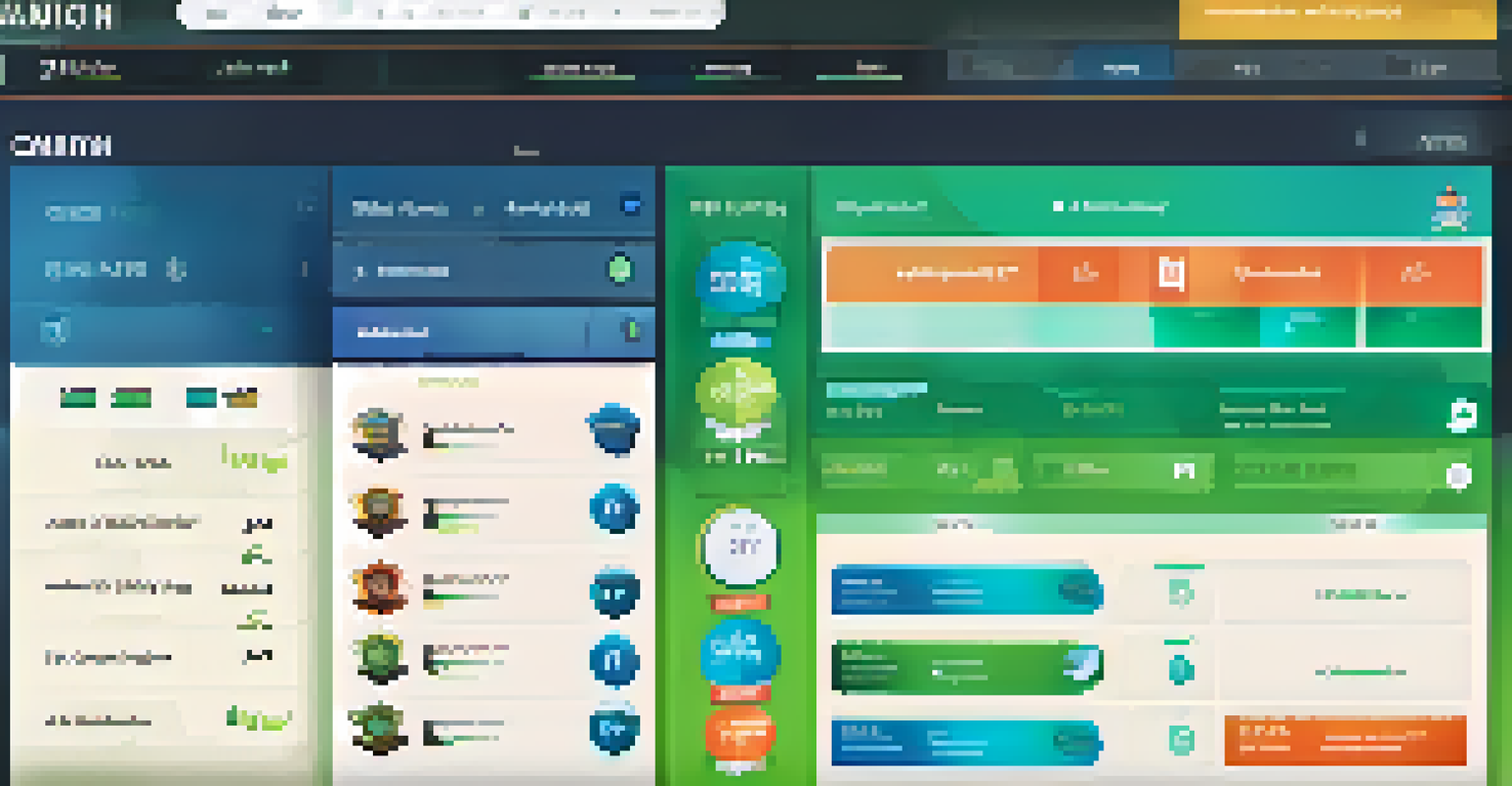Using Gamification to Enhance Learning in Digital Environments

Understanding Gamification in Digital Learning
Gamification involves integrating game-like elements into non-game contexts, like education. In digital learning environments, this means applying points, badges, and leaderboards to enhance student engagement. Imagine turning a mundane online course into a competitive challenge where learners earn rewards for completing modules. By tapping into the inherent joy of playing games, educators can create a more interactive and motivating experience.
Gamification can turn a dull learning experience into an exciting journey of discovery.
This approach transforms traditional learning methods, making them more appealing and fun. For instance, a simple quiz can become a race against the clock, where students compete for the highest score. By framing learning as a game, it encourages students to explore content actively rather than passively consuming information.
Ultimately, understanding the concept of gamification is the first step toward leveraging its benefits. As we dive deeper, we’ll explore specific strategies that can be implemented to foster an engaging digital learning environment.
The Benefits of Gamification in Education
Gamification offers a range of benefits that can significantly enhance the learning experience. One of the most compelling advantages is increased motivation; when learners are rewarded for their efforts, they are more likely to stay engaged and complete tasks. Think of it like earning points in a video game; each achievement drives players to progress further, and the same principle applies to students.

Additionally, gamification promotes healthy competition among peers, encouraging collaboration and social interaction. For example, when students compete on a leaderboard, they may feel inspired to support one another, sharing strategies and tips to climb the ranks together. This sense of community can enhance the learning process by making it less isolating.
Gamification Boosts Student Engagement
Integrating game elements like points and leaderboards in education significantly enhances student motivation and participation.
Moreover, gamification allows for immediate feedback, which is crucial for effective learning. Just like in a game where players receive instant results, students can quickly understand their strengths and weaknesses, enabling them to adjust their learning strategies accordingly.
Creating Engaging Gamified Learning Experiences
To create engaging gamified experiences, educators should start by identifying learning goals. What do you want your students to achieve? Once you have that in mind, you can incorporate game elements that align with those objectives. For instance, if the goal is to enhance vocabulary skills, a word-building competition could be a fun and effective approach.
The best way to predict the future is to create it.
Next, consider the balance between challenge and skill. Games are most enjoyable when they present a challenge that’s attainable, pushing players just beyond their current abilities. Likewise, in a learning environment, tasks should be challenging enough to captivate students without overwhelming them, ensuring they remain motivated to participate.
Lastly, don’t forget to include a narrative or theme to make the learning experience more immersive. Much like how video games often have rich storylines, linking educational content to a compelling narrative can help students connect more deeply with the material.
Integrating Technology for Gamification
Technology plays a pivotal role in enabling gamification in digital learning environments. With various online platforms, educators can easily incorporate gamified elements into their lessons. For instance, tools like Kahoot! and Quizizz allow teachers to create interactive quizzes that feel like games, where students compete in real-time.
Moreover, Learning Management Systems (LMS) can be enhanced with gamification features, such as progress tracking and reward systems. These features not only make the learning process more engaging but also provide educators with valuable insights into student performance. For example, tracking badges earned can help identify which areas students excel in or where they may need additional support.
Challenges in Gamification Adoption
While beneficial, implementing gamification in classrooms can be challenging due to varying student motivations and resource constraints.
Incorporating technology also opens up opportunities for remote learning, where gamification can bridge the gap between students and teachers. Virtual classrooms can become vibrant learning communities, making education more accessible and enjoyable for everyone involved.
Challenges of Implementing Gamification
While gamification presents many advantages, it also comes with challenges that educators must navigate. One primary concern is ensuring that the game elements do not overshadow the educational content. It’s crucial to maintain a focus on learning objectives, so students don’t become too fixated on earning points or badges at the expense of truly understanding the material.
Another challenge is the varying levels of motivation among students. Not every learner responds to gamification in the same way. Some might find competitive elements motivating, while others may feel anxious or discouraged. Educators need to be mindful of these differences and offer alternative paths for engagement, ensuring that all students feel included.
Finally, integrating gamification requires time and resources, which can be a barrier for some educators. Whether it's learning new technologies or developing gamified materials, the initial investment can be significant. However, with careful planning and gradual implementation, these challenges can be mitigated.
Measuring the Success of Gamified Learning
To determine the effectiveness of gamification in a digital learning environment, it’s important to establish clear metrics for success. Educators can measure engagement levels by tracking participation rates and completion times. For instance, if students are consistently logging in and interacting with gamified activities, it's a strong indicator that the approach is resonating.
Additionally, assessing knowledge retention through quizzes or assessments can provide insight into learning outcomes. Comparing scores before and after implementing gamification can help educators evaluate its impact. If students show significant improvement, it suggests that gamification has positively influenced their learning experience.
Future of Gamification Looks Bright
Advancements in technology, such as VR and AI, promise to further enhance gamified learning experiences, making education more engaging and effective.
Finally, gathering feedback from students is crucial. Surveys or informal discussions can reveal how learners perceive gamification, allowing educators to make necessary adjustments. This feedback loop not only helps refine the approach but also fosters a sense of ownership among students.
The Future of Gamification in Digital Learning
As technology continues to advance, the future of gamification in digital learning looks promising. With the rise of virtual reality (VR) and augmented reality (AR), educators have new opportunities to create immersive learning experiences. Imagine students exploring ancient civilizations through a VR game, making history come alive in a way that textbooks simply can’t match.
Furthermore, the integration of artificial intelligence (AI) can personalize learning experiences, tailoring challenges to meet individual student needs. This means that gamified elements can adapt based on performance, continuously pushing learners to achieve their best. Such advancements could make digital learning not only more engaging but also more effective.

In summary, as we look ahead, gamification will likely play an increasingly vital role in education. By embracing innovative technologies and strategies, educators can create captivating learning environments that inspire a lifelong love of learning.